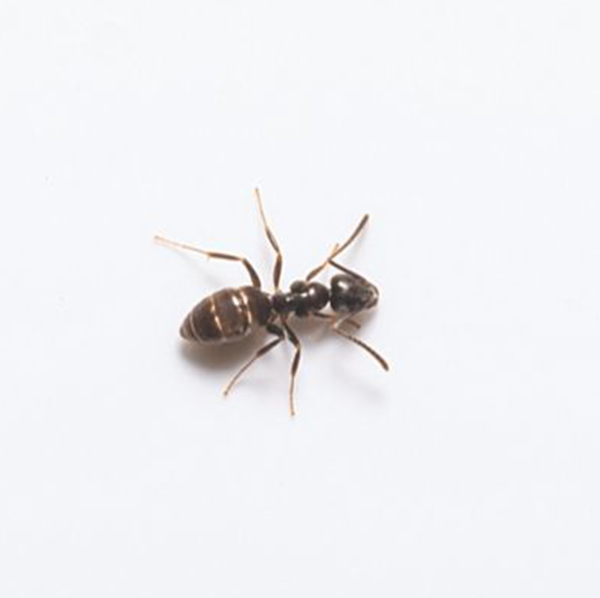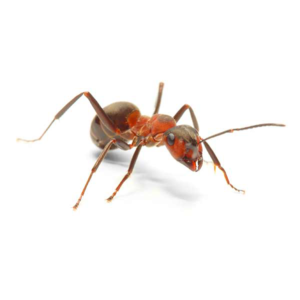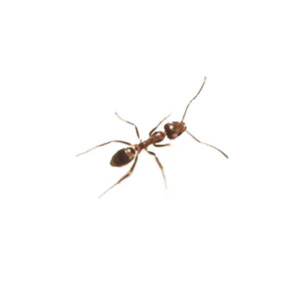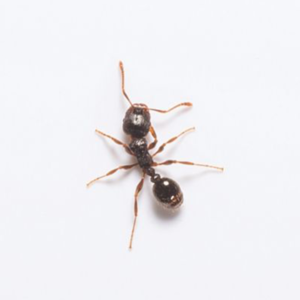Odorous House Ant Identification
Odorous house ants are common ants in North Carolina and are known for the rotten, coconut-like odor they emit when crushed. Named for their offensive odor, odorous house ants are one of the most difficult household ants to control. These ants lack aggression between nests, actually cooperating with other ants, which allows them to dominate areas they invade. Sometimes referred to as sugar ants, they prefer to nest outdoors and feed on the honeydew produced by aphids and mealybugs. They are more likely to invade homes in rainy weather when the honeydew of plants might be washed away.
What Do Odorous House Ants Look Like?
Odorous house ants are small, typically about 1/8 inch in length, and are dark brown to black in color. Their most distinctive feature, apart from their size and color, is the rotten coconut-like odor they emit when crushed, giving them their name.
Signs of an Odorous House Ant Infestation
Indications of an odorous house ant infestation include visible trails of these ants, especially near food sources. These ants are attracted to sweet substances and are often found in kitchens and areas where food is stored or prepared.
Habitat, Diet, Life Cycle & Bites
Where Do Odorous House Ants Live?
The odorous house ant will move their nests frequently and can survive in a variety of environments. In selecting a nesting site, the odorous house ant will construct a nest in shallow soil that is often located beneath an object, like a board or stone. Stacked materials, such as lumber, firewood, bricks, rocks, and cardboard are also favorite nesting sites. They forage into structures looking for food and can be found in kitchens and food prep areas. Indoors, odorous house ants prefer areas near moisture—wall voids near water pipes, under sinks, heaters, leaking fixtures, and damaged wood are all ideal habitats for them.
Diet of Odorous House Ants
Their diet primarily consists of sweet foods, including sugary kitchen spills, fruit juices, and honeydew from aphids. They also feed on dead insects and other protein sources.
Life Cycle of Odorous House Ants
The life cycle of odorous house ants involves the complete metamorphosis stages: egg, larva, pupa, and adult. Colonies can grow rapidly, with multiple queens capable of laying thousands of eggs.
Odorous House Ant Bites
Odorous house ants do not bite or sting. They pose no physical threat to humans, but their presence can be a nuisance and contaminate food sources.
Are Odorous House Ants Dangerous?
While odorous house ants are not dangerous or harmful to humans, they can be a significant nuisance in homes. Although they prefer to be outdoors and do not sting or bite, odorous house ants will forage inside, especially during rainy weather. As they search for food indoors, ants will establish trails on kitchen counters, and around cabinets, sinks, and baseboards. Due to their foraging activity, odorous house ants will easily contaminate human food supplies. Ant workers and scouts leave behind invisible scent trails from their food source, back to their nest, allowing hundreds of workers to invade homes and businesses. If an odorous house ant infestation is suspected, it is recommended to contact a professional ant exterminator.
How to Get Rid of Odorous House Ants?
Eliminating odorous house ants involves removing their food sources, sealing entry points into the home, and maintaining cleanliness, especially in kitchens. Baits and insecticides can be effective in controlling infestations.
Odorous House Ant Prevention Tips
Prevent odorous house ants by storing food in sealed containers, cleaning up spills immediately, and reducing moisture in and around your home. Regular pest inspections can help detect early signs of infestation.
Need help with Odorous House Ants control?
FAQs
What Attracts Odorous House Ants?
Odorous house ants are primarily attracted to sweet foods, including sugary spills, fruit, and honeydew from aphids.
Are Odorous House Ants the Same as Sugar Ants?
While often referred to as sugar ants, odorous house ants are a specific species known for the unpleasant odor they emit when crushed.
What is the Lifespan of an Odorous House Ant?
The lifespan of an individual odorous house ant varies, but workers can live for several months, while queens can live for several years under optimal conditions.





